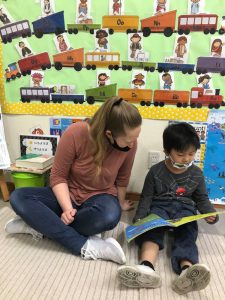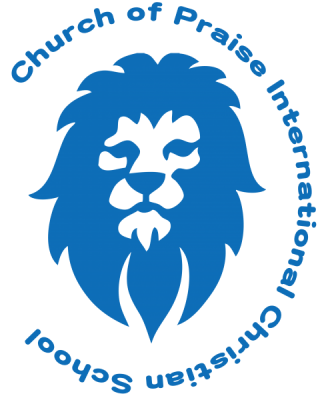Literature Menagerie
 The stories that have remained popular over the years are one of the many things that connect people, whether from the same country or from different ones. These stories give a look into the minds of the people – what they: value, find humorous, find beautiful, and the important lessons learned, amongst other qualities. Teachers have the unique position to share these stories with the next generation. While a love of books and reading cannot be taught, there are chances that, in learning about and reading stories, something comes to life in a child and that that idea or lesson learned stays with them as they grow.
The stories that have remained popular over the years are one of the many things that connect people, whether from the same country or from different ones. These stories give a look into the minds of the people – what they: value, find humorous, find beautiful, and the important lessons learned, amongst other qualities. Teachers have the unique position to share these stories with the next generation. While a love of books and reading cannot be taught, there are chances that, in learning about and reading stories, something comes to life in a child and that that idea or lesson learned stays with them as they grow.
Literature also has an excellent way of inciting wonderful memories for the reader. Whether a funny situation or an emotional moment, each story or poem, etc., stirs something that connects to or excites the reader. Childhood, especially, can be shaped by literature. Books have a special way of teaching children different ways to handle situations in life that might be difficult or strange, as well as helping to expand their imaginations. The following are some examples of classical literature for most school ages
For kindergarten, the book “The Very Hungry Caterpillar” by Eric Carle is very memorable. It is a humorous way to show a caterpillar’s journey to becoming a butterfly. The illustrations are quite unique, in addition to the book’s pages’ designs and shapes. Overall, it is a great way to begin a child’s interest in science and nature.
First graders might like “Frog and Toad Are Friends”, as written by Arnold Lobel. Again, the illustrations further add to the appeal of the characters. The dialogue between the characters is easier for those beginning to read. The situations presented are also quite relatable for children at this age. Even adults reading with a child might find the stories amusing and relatable. Especially relatable is one character’s lack of enthusiasm for getting out of bed.
For both first and second grade, “If You Give a Mouse a Cookie” is an adorable story. It was written by Laura Joffe Numeroff. The story is a lower level look into actions and consequences. The repetition of the book is a good confidence builder for those learning or struggling with sight words.
“Stuart Little” by E. B. White, who also wrote another animal classic called “Charlotte’s Web”, is a fascinating tale that really stretches the imagination. It’s about a talking mouse born to a human family. The humor and emotional moments are both good features of this story. However, the wild, far-fetched situations that the main character, Stuart, goes through might be the main attraction of the book. It is sure to prove entertaining to young and older readers alike. Third and fourth grades both might enjoy it.
“The Boxcar Children”, by Gertrude Chandler Warner, is a classic elementary school series. A group of orphaned siblings prove to be clever beyond their years as they solve mystery after mystery. Each story brings depth, as well as a good vocabulary for more experienced readers. The author is skilled at conveying emotions that children can understand; while she adds excitement to each adventure. Those who enjoy excitement and drama are sure to like this heartwarming set. This is another tale that fourth grade might choose.
“Mr. Popper’s Penguins” is another imaginative book. It was written by Florence and Richard Atwater. It entails the journey of some penguins and their effect on both an unsuspecting family and, eventually, a whole town. Each penguin is given a different personality. The book is sure to evoke sympathy and humor as the reader shares the ups-and-downs of what it might be like to live with penguins. Fifth grade might be a good fit for this book.
“The Chronicles of Narnia” series is a popular favorite. Due to the colloquial accents and advanced vocabulary and content of the stories, sixth grade might be a good group to read this. The series was brilliantly written by C.S. Lewis. There is a magical nature to the stories, so that is something to keep in mind before allowing a child to read it. These books show the great struggle between good and evil. The main characters of all the books are children, so young readers might be inspired by the adventure and thrilled by the suspense. The chronological order might be the best way to read the series.
A couple of books for junior high and highschool students range from fantastical to historical. “The Hobbit” is a wonderful fiction written by J. R. R. Tolkein. He was a literary peer and friend to C. S. Lewis. This story also shows the fight between good and evil. It also has a strong magical element, so, again, be aware. It is also quite lengthy, so it requires patience and a good vocabulary.
Lastly, Brother Andrew’s nonfiction telling of war and secrecy is called “God’s Smuggler”. A young man is used mightily by God to bring the Bible to those who were not able to have it. Since it involves war, it can be intense, but it is a true story, so it is sure to inspire. It is also important to have a knowledge of history and those who made a great impact on it.
Each of these stories are amazing and awe-inspiring. I hope that this list will encourage you and your children to be interested in literature for more than entertainment. The concepts and ideas of these stories are important for development and training. Thank you for your time, and God bless you!




